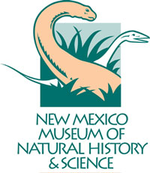This week we had news that secular views being left out of GSCE Religious Studies was a mistake. Of course this has got some conservative commentators backs up. Why should we teach non-religion in classes about religion? To answer that first we should ask why we are teaching children about religions in the first place. Clearly, or at least hopefully we don’t teach Religious Studies in order that children can decide which is the right one, or be told what to believe. We do it to encourage harmony and understanding. So we don’t remain ignorant and all become massive Islamophobes (although I’m not sure that is working out so well).
In light of this, it is very important to educate people about those who have no religion at all. To complete our set of understanding. No one is advocating that Religious Studies classes teach kids that God is imaginary, just that people are made aware of what atheists are all about and why. To neglect this is to leave people open to all sorts of nonsense that gets said about atheists by the religious. That atheists have no morals for example, or that atheists believe in nothing. The only way to counter such misinformation is to educate people. If Religious Studies has a purpose at all, it is to nurture understanding between faiths and beyond to the irreligious. Otherwise there is really no use in teaching it.
I also think that it should not be called Religious Studies, but rather Philosophy and Ethics or some more inclusive title. Again not to marginalize religion, but to encourage an understanding of world views that extend beyond religion and the broader context in which religions and philosophies interplay and relate to each other. Just teaching kids what each different religion believes is not truly insightful. It would serve us all well to learn about the cultural context in which these beliefs evolved. It doesn’t undermine belief in Christianity to learn about Jewish Messianism and the Roman occupation of Judea (and subsequent corruption or perceived corruption of the Jewish temple authorities), but it surely teaches us something about humanity, our history and how we cope with change. We would all do better if we were educated on all different kinds of Philosophies and their cultural and historical heritage, a vital part of that is those who have rejected religious belief in favour of a rational and empirical world view.
This is not a case of sneering liberals wanting to turn your children into God-hating communists. Its about giving the next generation the best possible understanding of what it is to be human, our struggles, and cultural heritage in the hope that it will iron out any prejudice and tribalism. Really, including atheism in Religious Studies should be the first in a step towards teaching a broader humanities subject. Not because we want to remove religion from your children’s lives, but because religion doesn’t have the monopoly on things humans believe and should therefore only comprise a part of their education on the subject.
UPDATE 04/12/2015 – It has been pointed out to me that I was perhaps unclear about my usage of the term atheism. To be clear I do refer to the wider definition that is probably better defined as Secular Humanism that simply atheism—which could apply to religions such as Buddhism. So whenever I use the term atheism in the context of it being taught as part of a Religious Studies syllabus, I mean Secular Humanist views, not just lack of belief in God.




